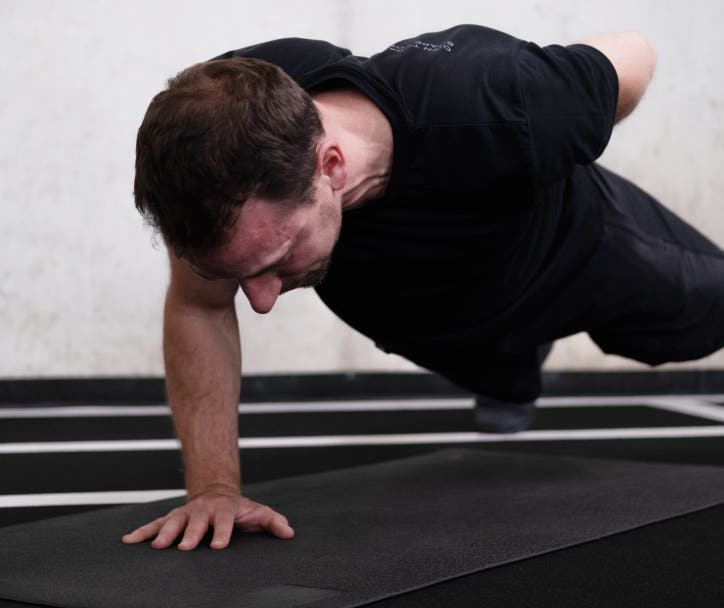Fireworks have fizzled out and holiday decorations are being stored away for next year. Even if you’ve been riding that new year high, it’s not uncommon to find yourself in a funk as we hit those odd in-between months when holiday festivities have ceased and spring isn’t quite on the horizon.
Add cold weather and darker days to the mix, and it can often leave you feeling lethargic, demotivated, and rather “blue.” And that’s exactly why this seasonal low is referred to as the winter blues.
No, winter blues aren’t a “you” thing. In fact, there is even a scientific term to describe this widespread depression known as “SAD” or Seasonal Affective Disorder. Getting too little sunlight and shorter days (characteristic of winter months) are believed to cause a chemical change in the brain that is partly responsible for SAD.
This same lack of sunlight during daylight hours can also throw off a person's circadian rhythm (our biological clock that regulates our sleep), contributing to the mood disorder.
Whether you suffer from SAD or are just feeling low, there are steps you can take to combat a winter lull that doesn’t involve medication. We’ve rounded up our top 5 tips to help you beat the blues, feel your best, and keep your motivation at an all-time high into spring.
Tip 1: Move it, move it
When you’re feeling down and out for the count, the best medicine is simple: a healthy dose of exercise. And while the idea of exercise may be daunting when you’re in the thick of it, trust us, it’s the remedy of all remedies.
You don’t need to go full throttle with a HIIT workout or power it out with a tough weight-lifting session (but if that’s your jam, we’re all for it). In this case – a gentle walk outside will deliver all those juicy health benefits to boost your mood and keep you feeling your best. Start small, aim for hitting your Base with a 17-minute walk, and build from there.
In fact, research published in the American Journal of Preventive Medicine shows that walking for about 17 minutes a day delivers more benefits than just feeling better in these darker months. It’s also linked to a lower risk of dying from cancer and respiratory and cardiovascular diseases.
If the outdoors aren’t so inviting, opt for some bodyweight exercises or mobility stretches. Studies have shown that daily moderate exercise can help reduce stress, improve mild-to-moderate depression and anxiety, improve sleep, and boost moods. It’s truly the ultimate defense when those low feelings come creeping in.
Schedule it, plan it, set your clothes out the night before – when motivation is at an all-time low, it’s more important than ever to streamline your efforts and set yourself up for success. By committing to daily movement, you’re creating your own personal armory to defeat the blues, and, the best part? You’ll be that much closer to crushing those long-term goals.

Tip 2: Go into the light
Natural light and even light therapy have been proven to be powerful tools against SAD. If you want to build the ultimate defense mechanism against SAD and the winter blues, try taking your workouts outdoors.
Research showed that exercise in natural sunlight alongside a special vitamin regime yielded an overall boost in happiness, well-being, self-esteem, and happiness. All the more reason to schedule in that lunchtime stroll.
If getting outdoors during daylight hours simply isn’t in the cards, there’s loads of research backing the use of light therapy as an alternative to treating SAD symptoms. Under the right protocol (each person is different), light therapy can be leveraged to help activate the circadian clock gene in the part of the brain involved in mood and sleep-wake cycles.
Tip 3: Fuel right, supplement as needed
In the months when sun-induced vitamin D is hard to come by, it’s more important than ever to nail your nutrition and up your supplements. Vitamin D, or the sunshine vitamin, plays a key role in regulating moods, maintaining glucose levels, and boosting our immune system along with several other key functions. And as sunlight is a key (but not the only) source of vitamin D, we need to turn to other sources during these darker days.
Foods like salmon, other fish high in fat, or liver are a valuable source of Vitamin D. Vitamin D can also be found in cheese and egg yolks, but only in small amounts. The best option to truly get the full realm of vitamin D benefits when sunlight is hard to come by may be to opt for a supplement. The Recommended Dietary Allowance (RDA) of Vitamin D is depending on the age and lies between 600-800 IU per day (= International Units).
One additional tactic besides building a well-balanced diet overall, is to swap simple carbohydrates for complex carbohydrates. While our cravings may tend towards comfort foods like pasta and pizzas, complex carbohydrates, such as whole grains, broccoli, and lentils, take longer to digest and don’t cause sudden spikes in blood sugar, which can also impact your mood.
Tip 4: Get positive
The power of mindset can’t be understated, especially when winter’s shorter, sunless days leave us even more vulnerable to bouts of sadness and depression. That’s why it’s even more critical to hone in on the tools that support a happier, more positive outlook.
Wind down your day with an uplifting book or try meditating for 5 minutes. Taking the time to relax rejuvenates the body and mind, helping you deal with difficult situations in a positive way. Start small, set a timer, focus on your breath, and let the stillness wash over you.
If you're not feeling in a meditative mood, curate the ultimate playlist for your next training session. Research shows that listening to the right music at the right moment can boost motivation and performance. Hitting a PB on a tough workout is a surefire way to lift most people out of a mid-winter slump.
Lastly, give visualization a try! Visualization is a tool that has been used by many great athletes, and research shows that visualization can do wonders for your mood and outlook. In fact, our brains are stimulated in the same ways when we visualize an action, and the same neural networks are activated as when we perform it.
Whether it’s a dreamy escape to sandy beaches or the fitness goal you've been working toward - visualization can be a key tool in improving your mindset and even improving your results!

Tip 5: It’s all about connection
The importance of human connection cannot be stressed enough. Connecting to others is crucial for our physical, psychological, and emotional well-being. It may seem obvious, but skimping on your social calendar could be costing you some incredible health benefits.
According to a larger study, a lack of social connections is more detrimental to health than obesity, smoking, and high blood pressure.
Social connection can also lower anxiety and depression rates, serving as the ultimate defense during those long winter days. And it’s not about the amount of your connections but rather your subjective feeling of closeness that matters.
You don’t even have to leave your house, send a message, get in a video chat, or schedule a virtual workout. Research shows that exercising with others can have an overall positive effect on our behavior and motivation. Aim for one social connection a day, in-person or virtual, and experience the positivity boost connecting with others can deliver.
Remember, a social connection a day keeps the blues at bay.
Let’s recap:
The dreary in-between months can be all-consuming, but there are actions you can take to fight back.
- Get moving with a daily dose of exercise, or better yet, take a morning run outdoors.
- Natural light can give you that much-needed mood-boosting vitamin D that’s hard to come by when the days are short.
- Hone-in on your nutrition and supplement as needed to protect your immune system and keep you feeling your best.
- Prioritize your mindset and utilize tactics that can steer your thoughts on the positive side.
- Lastly, focus on your social connections. Reach out, stay in touch – the winter months are tough, and you shouldn’t have to tackle them alone.
Remember, feeling “blue” is completely normal during the colder months. Just a few small changes can have a positive ripple effect on your mood, mindset, and overall well-being. Give some of these tips a try, find what works for you, and see what happens.
Sources
- Moderate Exercise Yields Big Benefits (2008) Mayo Clinic. Available here (Accessed: 17 January 2024).
- Vitamin D and Depression: Where is all the Sunshine? (2011) National Library of Medicine. Available here (Accessed: 02 January 2024).
- Scientists show how light therapy treats depression in mice model (2021) PLOS. Available here (Accessed: 17 January 2024).
- The Future of Memory: Remembering, Imagining, and the Brain (2013) National Library of Medicine. Available here (Accessed: 17 January 2024).
- Connectedness & Health: The Science of Social Connection. Available here (Accessed: 17 January 2024).